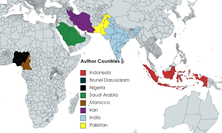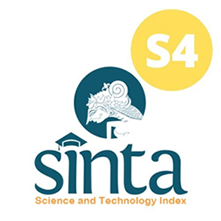PULMONARY SOUND DESIGN USING MAX 9814 SENSOR WITH NEXTION VIEW
Abstract
This study aims to develop a tool that can assist nurses in examining patients by displaying sounds and signals on a TFT LCD screen. This tool uses the MAX 9814 sound sensor, which converts sound into an electrical signal. This sensor will generate a voltage when the diaphragm inside it moves back and forth. To design this tool, researchers used a series of high pass filters and low pass filters with a cut-off frequency of 333 Hz - 714 kHz. During testing of this tool using the MAX 9814 sensor mounted on a stethoscope, the signal appears stable on the TFT LCD screen and sound can be played properly. However, if the placement of the stethoscope is not correct during the examination, this can also affect the signal and sound produced. This tool should not produce a clear and loud sound when checking, because if this happens, the inspection cannot be carried out optimally. This research also produces a signal shape that is almost similar to the signal on the phantom. It is important to note that the MAX 9814 can work optimally if it is not exposed to environmental noise. Therefore, if this equipment is used in a noisy environment, the signal and sound produced may be disturbed by environmental noise. This research was conducted with the aim of making it easier for doctors and nurses to carry out portable examinations, as well as to monitor signals and sounds easily.

This work is licensed under a Creative Commons Attribution-ShareAlike 4.0 International License.
Authors who publish with this journal agree to the following terms:
- Authors retain copyright and grant the journal right of first publication with the work simultaneously licensed under a Creative Commons Attribution License that allows others to share the work with an acknowledgement of the work's authorship and initial publication in this journal.
- Authors are able to enter into separate, additional contractual arrangements for the non-exclusive distribution of the journal's published version of the work (e.g., post it to an institutional repository or publish it in a book), with an acknowledgement of its initial publication in this journal.
- Authors are permitted and encouraged to post their work online (e.g., in institutional repositories or on their website) prior to and during the submission process, as it can lead to productive exchanges, as well as earlier and greater citation of published work (See The Effect of Open Access).











